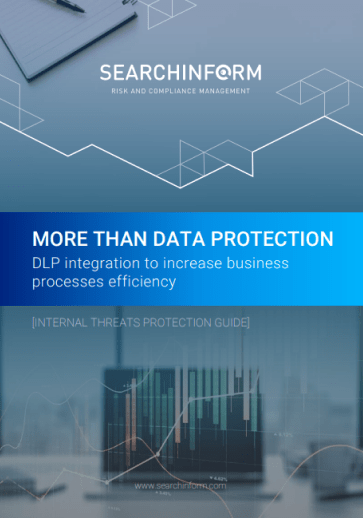Threat Hunting Explained: Tools and Methods
- Introduction to Threat Hunting
- What is Threat Hunting?
- Importance of Threat Hunting in Modern Cybersecurity
- The Human Element: Skilled Hunters and Cutting-Edge Tools
- Real-World Cases: Threat Hunting in Action
- Equifax Data Breach
- Target's Point-of-Sale Attack
- The Anthem Cyberattack
- Operation Aurora
- Lessons Learned: The Power of Proactive Defense
- Threat Hunting Methodologies
- Hypothesis-Driven Investigation
- Formulating a Hypothesis
- Testing and Validation
- Advantages
- Indicator of Compromise (IOC) Search
- Defining IOCs
- IOC-Based Threat Hunting
- Advantages
- Machine Learning and Behavioral Analysis
- Leveraging Advanced Technologies
- Behavioral Analysis
- Machine Learning
- Advantages
- The Synergy of Methodologies
- Tools and Technologies for Threat Hunting
- Security Information and Event Management (SIEM) Systems
- Endpoint Detection and Response (EDR)
- Threat Intelligence Platforms (TIPs)
- Network Traffic Analysis (NTA) Tools
- Machine Learning and Behavioral Analytics
- Forensic Tools
- Deception Technologies
- The Arsenal of Threat Hunting
- Best Practices for Effective Threat Hunting
- Establish a Clear Objective: Define Goals and Scope
- Leverage Comprehensive Data Sources: Collect and Correlate Data
- Employ Advanced Analytics: Utilize Machine Learning and Behavioral Analysis
- Develop Hypotheses: Formulate and Test Hypotheses
- Automate Where Possible: Implement Automation Tools
- Foster Collaboration: Encourage Teamwork and Knowledge Sharing
- Maintain Continuous Monitoring: Adopt a Persistent Approach
- Document and Review: Keep Detailed Records
- Stay Informed: Keep Up with Emerging Threats
- Conduct Regular Training: Invest in Skill Development
- Implement Feedback Loops: Learn and Adapt
- Enhancing Threat Hunting with SearchInform Solutions
- Comprehensive Data Collection and Correlation: Unified Data Platform
- Advanced Analytics and Machine Learning: Real-Time Threat Detection
- Behavioral Analysis: User and Entity Behavior Analytics (UEBA)
- Automated Threat Hunting: Streamlined Operations
- Comprehensive Forensic Capabilities: In-Depth Investigations
- Real-Time Monitoring and Alerts: Continuous Surveillance
- Threat Intelligence Integration: Actionable Insights
- User-Friendly Interface: Ease of Use
- Compliance and Reporting: Regulatory Adherence
- Scalability and Flexibility: Adaptable Solutions
- Enhanced Collaboration Team Coordination
- A Comprehensive Threat Hunting Solution
Introduction to Threat Hunting
In an era where cyber threats evolve at an alarming pace, traditional cybersecurity measures often fall short. Enter threat hunting—a proactive approach that seeks to outmaneuver cyber adversaries before they can wreak havoc. But what exactly does threat hunting entail, and why has it become a cornerstone of modern cybersecurity strategies? In this article, we delve deep into the essence of threat hunting, unpacking its importance and offering a comprehensive overview of this critical practice.
What is Threat Hunting?
At its core, threat hunting is the proactive search for cyber threats that may have infiltrated an organization's network undetected. Unlike traditional reactive measures that respond once an attack has been identified, threat hunting takes a preemptive stance.
Imagine a skilled detective combing through clues to solve a crime before it happens. Similarly, threat hunters employ advanced techniques and sophisticated tools to uncover hidden threats, often leveraging threat intelligence, behavioral analytics, and anomaly detection. These professionals don't wait for alerts; they actively search for any signs of compromise, seeking to neutralize potential threats before they can cause significant damage.
Importance of Threat Hunting in Modern Cybersecurity
As cyber threats become more sophisticated, the importance of threat hunting cannot be overstated. Traditional security measures—firewalls, antivirus software, and intrusion detection systems—are necessary but not sufficient. These tools are often reactive, designed to respond after an attack has been detected. In contrast, threat hunting offers a proactive layer of defense.
Consider the ever-growing landscape of cyber threats: ransomware attacks, phishing schemes, and advanced persistent threats (APTs) are just the tip of the iceberg. The stakes are incredibly high; a single breach can result in massive financial losses, reputational damage, and legal ramifications.
Organizations that incorporate threat hunting into their cybersecurity framework gain a significant edge. They can identify and mitigate threats before they escalate, thereby reducing the window of exposure and limiting potential damage. Additionally, threat hunting helps in fine-tuning existing security measures by uncovering gaps and weaknesses that may have been overlooked.
The Human Element: Skilled Hunters and Cutting-Edge Tools
One of the most compelling aspects of threat hunting is the human element. While automated tools and algorithms play a crucial role, the expertise of skilled threat hunters is invaluable. These professionals bring a nuanced understanding of cyber threats, often thinking like adversaries to anticipate their moves.
Cutting-edge tools, from machine learning algorithms to advanced behavioral analytics, empower these experts to sift through vast amounts of data, identifying patterns and anomalies that might indicate a threat. This synergy between human intuition and technological prowess is what makes threat hunting exceptionally effective.
Threat hunting represents a necessary evolution in the realm of cyber defense. By shifting from a reactive to a proactive stance, organizations can stay a step ahead of cyber adversaries, safeguarding their digital assets and maintaining trust with their stakeholders. As cyber threats continue to evolve, the need for skilled threat hunters and advanced tools will only grow, making this discipline an indispensable component of modern cybersecurity strategies.
Real-World Cases: Threat Hunting in Action
While theoretical discussions can provide valuable insights, real-world cases truly illustrate the impact of threat hunting. These stories highlight the techniques and tools employed, as well as the tangible benefits that organizations can gain from adopting a proactive cybersecurity stance. Here are some notable examples:
Equifax Data Breach
In 2017, Equifax, one of the largest credit reporting agencies, suffered a massive data breach, compromising the personal information of over 147 million people. After the breach was discovered, Equifax employed threat hunting techniques to understand the extent of the intrusion and identify the vulnerabilities exploited by the attackers.
Using advanced forensic tools and behavioral analytics, the threat hunting team traced the breach back to a vulnerability in the company’s web application software. The proactive efforts didn’t stop the breach, but they were crucial in identifying the scope of the attack and mitigating further damage. The incident underscored the importance of continuous threat hunting to uncover and address vulnerabilities before they can be exploited.
Target's Point-of-Sale Attack
In 2013, Target experienced a significant security breach where cybercriminals accessed the credit and debit card information of approximately 40 million customers. The attackers installed malware on Target's point-of-sale (POS) systems, which went undetected by traditional security measures.
After the breach was discovered, Target's security team initiated a threat hunting operation to understand the attack vectors and methods used. By employing network traffic analysis and endpoint detection tools, the team discovered that the attackers had initially infiltrated the network via a third-party vendor. This proactive threat hunting effort was crucial in identifying the breach's entry point and preventing future attacks through similar vectors.
The Anthem Cyberattack
In 2015, Anthem Inc., one of the largest health insurance companies in the U.S., was hit by a cyberattack that exposed the personal information of nearly 80 million customers. The attackers used advanced techniques to infiltrate Anthem’s network and remained undetected for months.
Following the discovery of the breach, Anthem's threat hunting team used machine learning algorithms and threat intelligence to investigate the attackers' methods. They identified that the breach began with a phishing email sent to an employee, which provided the attackers with access to the network. The team's proactive measures helped in understanding the attack's progression and enhancing the company’s defense mechanisms against future threats.

Operation Aurora
In late 2009, Google and several other major corporations were targeted by a sophisticated cyber-espionage campaign known as Operation Aurora. The attackers exploited a zero-day vulnerability in Internet Explorer to gain access to corporate networks.
Google's threat hunting team played a pivotal role in uncovering the extent of the attack. By analyzing network traffic and employing anomaly detection techniques, they identified that the attackers aimed to steal intellectual property and access Gmail accounts of Chinese human rights activists. The proactive threat hunting efforts not only helped mitigate the immediate threat but also led to the discovery of a widespread espionage campaign targeting multiple industries.
Lessons Learned: The Power of Proactive Defense
These high-profile cases underscore the transformative power of threat hunting. By adopting a proactive approach, organizations can uncover hidden threats, neutralize risks, and outmaneuver even the most sophisticated adversaries. The combination of skilled human hunters and advanced technological tools creates a robust defense mechanism that goes beyond traditional cybersecurity measures.
Threat Hunting Methodologies
Threat hunting methodologies vary, but they generally fall into three primary categories: hypothesis-driven investigation, Indicator of Compromise (IOC) search, and machine learning and behavioral analysis. Each methodology offers unique advantages and can be used in conjunction with others for a comprehensive threat hunting strategy.
Hypothesis-Driven Investigation
Formulating a Hypothesis
In hypothesis-driven investigation, threat hunters start with a specific hypothesis about potential threats. This approach is akin to scientific research, where a hypothesis is formed based on existing knowledge, observations, or intelligence. For instance, a hypothesis might suggest that a particular vulnerability in the system is being exploited by cybercriminals.
Testing and Validation
Once the hypothesis is formulated, the next step involves rigorous testing and validation. Threat hunters use various tools and techniques, such as network traffic analysis, log reviews, and endpoint monitoring, to validate their assumptions. If evidence supporting the hypothesis is found, the threat is investigated further to identify its scope and impact.
Advantages
This methodology allows for targeted investigations, making it easier to allocate resources effectively. It also encourages a deep understanding of the organization's specific vulnerabilities and threat landscape, enabling more precise threat detection and mitigation.
Indicator of Compromise (IOC) Search
Defining IOCs
Indicators of Compromise (IOCs) are specific pieces of evidence that suggest a security breach. These can include unusual IP addresses, domain names, file hashes, registry keys, or patterns of behavior that align with known malicious activity.
IOC-Based Threat Hunting
IOC-based threat hunting involves scanning systems and networks for known IOCs. This method is highly effective for identifying threats that have been previously documented. Tools like SIEM (Security Information and Event Management) systems and threat intelligence platforms are often employed to automate the search for IOCs.
Advantages
IOC-based threat hunting is efficient for detecting known threats quickly. It leverages existing threat intelligence to provide immediate insights into potential compromises, allowing for swift action to mitigate risks.
Machine Learning and Behavioral Analysis
Leveraging Advanced Technologies
Machine learning and behavioral analysis represent the cutting-edge of threat hunting methodologies. These techniques involve leveraging advanced algorithms and analytics to identify patterns and anomalies that may indicate a threat.
Behavioral Analysis
Behavioral analysis focuses on understanding normal user and system behavior to identify deviations that may signify a threat. For example, if an employee's account suddenly begins accessing sensitive data at odd hours or from unusual locations, behavioral analysis tools can flag this as suspicious activity.
Machine Learning
Machine learning models can analyze vast amounts of data in real-time, identifying both known and unknown threats. These models can be trained to recognize patterns indicative of malicious activity, offering a dynamic and adaptive approach to threat detection.
Advantages
The primary advantage of machine learning and behavioral analysis is their ability to detect novel and sophisticated threats that traditional methods may miss. These techniques can adapt to evolving threat landscapes, providing a more robust defense mechanism.
The Synergy of Methodologies
No single methodology can address all potential threats, which is why a multi-faceted approach is often the most effective. By combining hypothesis-driven investigation, IOC search, and machine learning and behavioral analysis, organizations can create a robust and proactive threat hunting strategy. This synergy ensures comprehensive coverage, enabling the identification and neutralization of a wide range of cyber threats, thereby safeguarding digital assets and maintaining trust in an increasingly interconnected world.
Tools and Technologies for Threat Hunting
In the ever-evolving landscape of cybersecurity, effective threat hunting necessitates the use of advanced tools and technologies. These tools not only aid in the detection and investigation of potential threats but also enhance the overall efficiency and accuracy of threat hunting efforts. Here, we explore some of the most crucial tools and technologies that threat hunters employ to safeguard digital assets.
Security Information and Event Management (SIEM) Systems
SIEM Systems are pivotal in aggregating and analyzing log data from various sources within an organization. They provide real-time analysis and correlation of security events, enabling threat hunters to identify potential threats quickly.
Splunk, IBM QRadar, and ArcSight are among the leading SIEM solutions. These platforms offer features like log management, real-time monitoring, and advanced threat detection capabilities.
Endpoint Detection and Response (EDR)
Endpoint Detection and Response (EDR) tools focus on monitoring and responding to threats at the endpoint level. They provide visibility into endpoint activities and detect suspicious behavior that may indicate a compromise.
CrowdStrike Falcon, Carbon Black, and SentinelOne are well-regarded EDR tools. They offer capabilities such as real-time threat detection, forensic analysis, and automated response to mitigate threats.
Threat Intelligence Platforms (TIPs)
Threat Intelligence Platforms (TIPs) aggregate and analyze threat data from various sources, providing actionable intelligence that threat hunters can use to identify and mitigate risks.
Anomali, ThreatConnect, and Recorded Future are popular threat intelligence platforms that offer features like threat data aggregation, enrichment, and correlation to support proactive threat hunting.
Network Traffic Analysis (NTA) Tools
Network Traffic Analysis (NTA) tools monitor network traffic to identify unusual patterns and anomalies that may indicate a threat. These tools are essential for detecting lateral movement within networks and spotting potential data exfiltration attempts.
Darktrace, Corelight, and ExtraHop are leading NTA solutions. They provide real-time monitoring, anomaly detection, and advanced analytics to help threat hunters identify and investigate suspicious network activities.
Machine Learning and Behavioral Analytics
Machine Learning and Behavioral Analytics tools leverage advanced algorithms to identify patterns and anomalies that may indicate a threat. These technologies can analyze vast amounts of data in real-time, offering a dynamic and adaptive approach to threat detection.
Vectra, Exabeam, and Securonix are well-known for their machine learning and behavioral analytics capabilities. These platforms can detect both known and unknown threats by analyzing user and entity behavior.
Forensic Tools
Forensic Tools are essential for deep-dive investigations into suspected security incidents. They help threat hunters analyze malware, scrutinize compromised systems, and uncover the root cause of breaches.
EnCase, FTK (Forensic Toolkit), and Autopsy are widely used forensic tools. They offer features like disk imaging, memory analysis, and timeline reconstruction to support thorough investigations.
Deception Technologies
Deception Technologies use decoys and traps to lure cyber adversaries, providing early detection of malicious activities. These tools can identify attackers' tactics, techniques, and procedures (TTPs) by observing how they interact with the decoys.
Illusive Networks, TrapX, and Attivo Networks offer advanced deception technologies that create realistic decoys and traps to detect and analyze malicious activities.
The Arsenal of Threat Hunting
The effectiveness of threat hunting largely depends on the tools and technologies employed. By leveraging a combination of SIEM systems, EDR tools, TIPs, NTA solutions, machine learning and behavioral analytics, forensic tools, and deception technologies, threat hunters can create a robust and proactive defense mechanism. These tools not only enhance the ability to detect and investigate potential threats but also improve overall cybersecurity posture, ensuring the protection of digital assets in an increasingly complex threat landscape.
Best Practices for Effective Threat Hunting
Effective threat hunting is a proactive approach to cybersecurity that requires a strategic combination of methodologies, tools, and human expertise. Implementing best practices can significantly enhance the efficiency and success of threat hunting efforts. Here are some key best practices that can help organizations build a robust threat hunting program.
Establish a Clear Objective: Define Goals and Scope
Before embarking on a threat hunting mission, it's crucial to establish clear objectives. Determine what you aim to achieve—whether it's identifying specific types of threats, assessing the security posture of critical assets, or uncovering hidden vulnerabilities. Clearly defined goals and scope help in focusing efforts and resources effectively.
Leverage Comprehensive Data Sources: Collect and Correlate Data
Effective threat hunting relies on comprehensive data collection from various sources, including network traffic, endpoint logs, user activity, and external threat intelligence. Correlating this data provides a holistic view of the threat landscape, enabling more accurate detection and analysis of potential threats.
Employ Advanced Analytics: Utilize Machine Learning and Behavioral Analysis
Advanced analytics, including machine learning and behavioral analysis, can significantly enhance threat detection capabilities. These technologies can analyze vast amounts of data in real-time, identifying patterns and anomalies that may indicate a threat. Employing these tools allows for a dynamic and adaptive approach to threat hunting.
Develop Hypotheses: Formulate and Test Hypotheses
A hypothesis-driven approach is fundamental to effective threat hunting. Formulate hypotheses based on existing knowledge, observations, or threat intelligence. Test these hypotheses through rigorous analysis and investigation. This methodical approach helps in uncovering hidden threats and understanding their impact.
Automate Where Possible: Implement Automation Tools
Automation can streamline many aspects of threat hunting, from data collection and correlation to initial analysis and alert generation. Implementing automation tools like SIEM systems, EDR solutions, and threat intelligence platforms can enhance efficiency and allow threat hunters to focus on more complex tasks.
Foster Collaboration: Encourage Teamwork and Knowledge Sharing
Threat hunting is often a collaborative effort that benefits from diverse expertise. Encourage teamwork and knowledge sharing among different teams, such as IT, security operations, and incident response. Regularly conduct threat hunting exercises and debriefs to share findings and improve collective knowledge.
Maintain Continuous Monitoring: Adopt a Persistent Approach
Threat hunting should be a continuous, ongoing process rather than a one-time effort. Maintain persistent monitoring of networks, endpoints, and user activities to identify and respond to threats in real-time. Continuous monitoring ensures that threats are detected and mitigated promptly.
Document and Review: Keep Detailed Records
Documenting the threat hunting process, including hypotheses, methods, findings, and outcomes, is essential for future reference and analysis. Regularly review and update these records to reflect new insights and evolving threats. Documentation also helps in fine-tuning methodologies and improving overall effectiveness.
Stay Informed: Keep Up with Emerging Threats
The threat landscape is constantly evolving, with new vulnerabilities and attack vectors emerging regularly. Stay informed about the latest threats, vulnerabilities, and attack techniques by following industry news, participating in forums, and leveraging threat intelligence feeds. Continuous learning and adaptation are key to staying ahead of adversaries.
Conduct Regular Training: Invest in Skill Development
Investing in the continuous training and development of threat hunters is crucial for maintaining a high level of expertise. Provide regular training sessions, workshops, and certifications to keep the team updated on the latest tools, techniques, and best practices. Skilled threat hunters are better equipped to identify and mitigate sophisticated threats.
Implement Feedback Loops: Learn and Adapt
Implementing feedback loops in the threat hunting process allows for continuous improvement. Regularly evaluate the effectiveness of threat hunting activities, identify areas for improvement, and adapt strategies accordingly. Feedback loops help in refining techniques, improving accuracy, and enhancing overall threat hunting capabilities.
By adhering to these best practices, organizations can build a proactive and effective threat hunting program. Establishing clear objectives, leveraging advanced analytics, fostering collaboration, and maintaining continuous monitoring are all critical components of a successful threat hunting strategy. Implementing these best practices ensures that organizations are well-equipped to identify, investigate, and mitigate potential threats, thereby safeguarding their digital assets and maintaining a strong cybersecurity posture.
Enhancing Threat Hunting with SearchInform Solutions
SearchInform Solutions offer a comprehensive suite of tools designed to elevate threat hunting efforts through advanced analytics, real-time monitoring, and robust data correlation capabilities. Here’s how SearchInform can enhance your threat hunting strategy:
Comprehensive Data Collection and Correlation: Unified Data Platform
SearchInform integrates various data sources, such as network traffic, endpoint logs, user activities, and external threat intelligence, into a unified data platform. This enables correlation of information from multiple sources, providing a holistic view of the threat landscape.
Advanced Analytics and Machine Learning: Real-Time Threat Detection
With advanced analytics and machine learning capabilities, SearchInform analyzes vast amounts of data in real-time. These technologies identify patterns and anomalies that may indicate potential threats, enabling proactive threat detection and rapid response.
Behavioral Analysis: User and Entity Behavior Analytics (UEBA)
SearchInform includes robust behavioral analysis tools that monitor user and entity behavior. By establishing baselines for normal activities, these tools can identify deviations that may signify malicious intent, such as unusual login times, access patterns, or data transfers.
Automated Threat Hunting: Streamlined Operations
Automation is a critical feature of SearchInform, allowing for streamlined threat hunting operations. Automated tasks such as data collection, initial analysis, and alert generation free up threat hunters to focus on more complex investigative activities.
Comprehensive Forensic Capabilities: In-Depth Investigations
SearchInform provides advanced forensic tools that enable deep-dive investigations into suspected security incidents. These tools help threat hunters analyze malware, scrutinize compromised systems, and uncover the root cause of breaches, ensuring thorough threat mitigation.
Real-Time Monitoring and Alerts: Continuous Surveillance
Continuous real-time monitoring and alerting capabilities ensure that threats are detected and addressed promptly. SearchInform provides customizable alerts, allowing threat hunters to receive notifications based on specific criteria and thresholds.
Threat Intelligence Integration: Actionable Insights
SearchInform integrates with external threat intelligence feeds, providing actionable insights into emerging threats. This integration enhances the threat hunting process by offering up-to-date information on threat landscapes, vulnerabilities, and attack techniques.
User-Friendly Interface: Ease of Use
The user-friendly interface of SearchInform makes it accessible for both novice and experienced threat hunters. Intuitive dashboards, customizable views, and easy-to-navigate menus streamline the threat hunting process, enhancing overall efficiency.
Compliance and Reporting: Regulatory Adherence
SearchInform offers robust compliance and reporting features that help organizations adhere to regulatory requirements. Detailed logs, audit trails, and customizable reports ensure that all threat hunting activities are documented and can be reviewed for compliance purposes.
Scalability and Flexibility: Adaptable Solutions
SearchInform is scalable and flexible, making it suitable for organizations of all sizes. Whether dealing with a small business or a large enterprise, these solutions can be tailored to meet specific needs and grow with the organization as its threat landscape evolves.
Enhanced Collaboration Team Coordination
SearchInform facilitates enhanced collaboration among different teams, such as IT, security operations, and incident response. Shared dashboards, collaborative investigation tools, and centralized data repositories improve coordination and collective response to threats.
A Comprehensive Threat Hunting Solution
SearchInform offers a robust and comprehensive suite of tools that significantly enhance threat hunting efforts. By leveraging advanced analytics, real-time monitoring, behavioral analysis, and automation, organizations can proactively identify and mitigate potential threats. The user-friendly interface, scalability, and compliance features make SearchInform an ideal choice for organizations looking to strengthen their cybersecurity posture and protect their digital assets effectively.
Elevate your cybersecurity posture with SearchInform solutions and stay ahead of evolving threats. Contact us today to schedule a demo and discover how our advanced tools can enhance your threat hunting capabilities.
Full-featured software with no restrictions
on users or functionality
Company news
SearchInform uses four types of cookies as described below. You can decide which categories of cookies you wish to accept to improve your experience on our website. To learn more about the cookies we use on our site, please read our Cookie Policy.
Necessary Cookies
Always active. These cookies are essential to our website working effectively.
Cookies does not collect personal information. You can disable the cookie files
record
on the Internet Settings tab in your browser.
Functional Cookies
These cookies allow SearchInform to provide enhanced functionality and personalization, such as remembering the language you choose to interact with the website.
Performance Cookies
These cookies enable SearchInform to understand what information is the most valuable to you, so we can improve our services and website.
Third-party Cookies
These cookies are created by other resources to allow our website to embed content from other websites, for example, images, ads, and text.
Please enable Functional Cookies
You have disabled the Functional Cookies.
To complete the form and get in touch with us, you need to enable Functional Cookies.
Otherwise the form cannot be sent to us.

Subscribe to our newsletter and receive a bright and useful tutorial Explaining Information Security in 4 steps!

Subscribe to our newsletter and receive case studies in comics!







